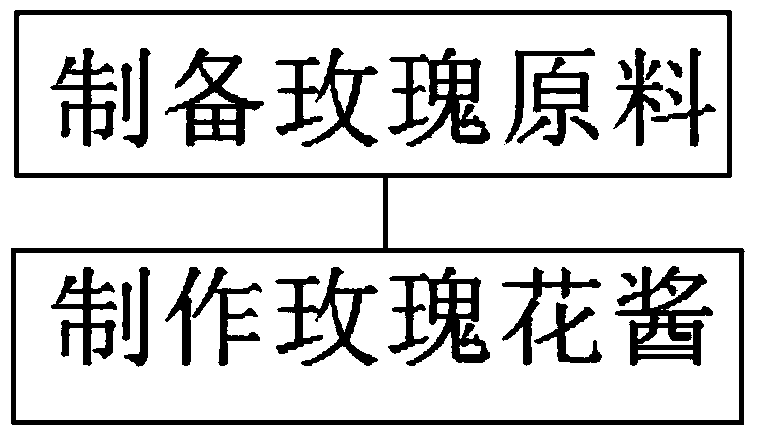Production technology of rose paste
A technology for rose sauce and production process, which is applied in application, food preparation, food science and other directions, and can solve the problems of affecting nutritional value, reducing anthocyanin activity, and losing the aroma of roses.
- Summary
- Abstract
- Description
- Claims
- Application Information
AI Technical Summary
Problems solved by technology
Method used
Image
Examples
specific Embodiment 1
[0023] In the first step, fresh rose petals can be obtained by picking the roses that have just bloomed between 7:50-8:30 am and removing the petals. Freshly bloomed roses are roses within 24 hours of blooming. In the second step, impurities such as worms and branches are removed. Impurities can be removed by cleaning. In the third step, the rose petals from which impurities have been removed can be directly packed into food plastic bags, or the rose petals can be crushed and packed into food plastic bags. During the fifth step, as a preferred solution, the temperature of the center of the material in the plastic bag for food will be rapidly dropped to -18°C to -20°C. The time required for the temperature drop process is preferably not more than 1 minute. The center of the material can be cooled by putting it in a cold storage.
specific Embodiment 2
[0024] In step 1, the rose raw material can be thawed by taking the rose raw material out of the cold storage in advance and putting it in a room temperature environment. It is best not to take out more than one day in advance to prevent the rose raw materials from deteriorating. In step 2, the auxiliary materials used to make rose jam include white sugar, syrup and pectin. After step three, step four is filling and sealing the rose sauce. The rose sauce can be filled into a glass bottle with a volume not greater than 170g. After step four, step five is sterilization. High-temperature sterilization can be used, for example, the sterilization can be carried out by placing the glass bottle filled with rose sauce in an environment with a temperature not lower than 95°C for not less than 20 minutes. Of course, other sterilization methods can also be used. As a preferred solution, the sterilization is performed by placing the glass bottle filled with the rose sauce in an enviro...
PUM
 Login to View More
Login to View More Abstract
Description
Claims
Application Information
 Login to View More
Login to View More - R&D
- Intellectual Property
- Life Sciences
- Materials
- Tech Scout
- Unparalleled Data Quality
- Higher Quality Content
- 60% Fewer Hallucinations
Browse by: Latest US Patents, China's latest patents, Technical Efficacy Thesaurus, Application Domain, Technology Topic, Popular Technical Reports.
© 2025 PatSnap. All rights reserved.Legal|Privacy policy|Modern Slavery Act Transparency Statement|Sitemap|About US| Contact US: help@patsnap.com

